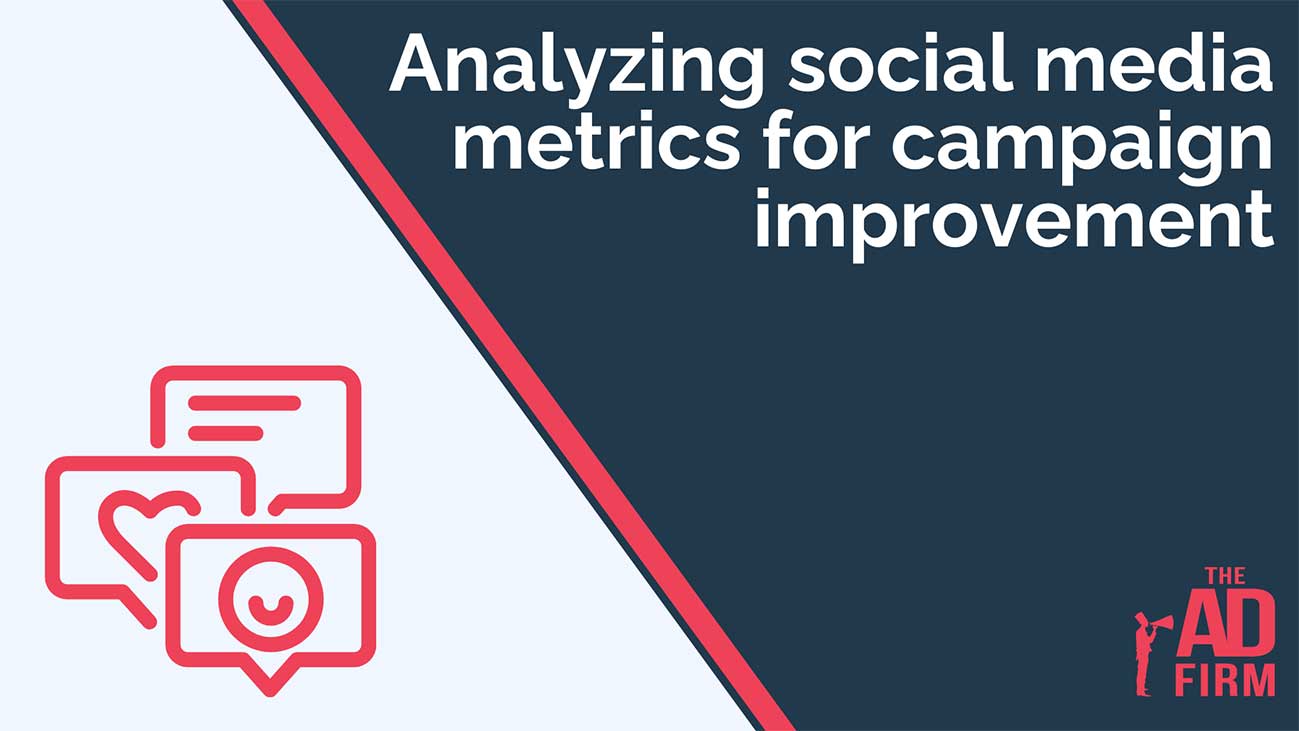In the dynamic world of social media, understanding and leveraging metrics is the cornerstone for enhancing campaign performance. It serves as an ultimate weapon for digital marketing services to gain massive leverage in today’s digital era.
This in-depth guide aims to equip you with the knowledge to meticulously analyze social media metrics, providing a foundation to refine strategies, boost engagement, and ultimately improve your return on investment. By focusing on actionable insights rather than mere numbers, we’ll navigate through the essential metrics, analytical tools, and optimization techniques that are pivotal in transforming your social media goals into measurable successes.
Understanding Key Social Media Metrics
Navigating the success of social media campaigns hinges on a deep understanding of key metrics that track performance and audience behavior. Let’s unravel these metrics to pave the way for strategic improvements.
Reach and Impressions
Reach and impressions are fundamental yet distinct metrics that shed light on the visibility of your content. Reach quantifies the total number of unique viewers who have encountered your post, offering a glimpse into the breadth of your content’s audience. Impressions, meanwhile, count how often your content has been displayed, including repeated views by the same users. This distinction is crucial; while reach provides insight into the scope of your audience, impressions help gauge the frequency of exposure. Together, they form a comprehensive view of your content’s visibility, allowing you to assess your posts’ initial impact and potential virality.
Engagement Metrics
Engagement metrics are the pulse of your social media presence, indicating how actively users interact with your content. This category encompasses likes, comments, shares, and saves, showing how compelling your audience finds your content. A high level of engagement signals that your content resonates with your followers, potentially boosting your visibility in social media algorithms. Moreover, engagement rates can reveal preferences and trends within your audience, guiding content creation toward what truly sparks interest and conversation.
Conversion Metrics
Conversion metrics are the bridge between social media efforts and tangible business outcomes. They measure actions that contribute directly to your business goals, such as website visits, newsletter signups, product purchases, or any specific call-to-action response. Monitoring these metrics enables you to quantify the effectiveness of your social media campaigns in driving desired actions. By analyzing conversion rates, you can pinpoint which content types, messaging, or campaigns are most successful at turning followers into leads or customers. This insight is invaluable for refining your social media strategy to focus on what effectively drives conversions optimizing your investment return.
Tools for Social Media Metrics Analysis
The right analytical tools are indispensable to transform social media metrics into actionable insights. These tools dissect data, revealing the story behind the numbers and guiding strategic decisions.
Native Platform Analytics
Social media platforms recognize the importance of analytics and provide native tools designed to help marketers understand their audience and content performance.
- Facebook Insights offers detailed views on page likes, reach, and engagement, allowing for a deep dive into audience demographics and post-performance.
- Twitter Analytics presents tweet impressions, engagement rates, and follower growth data, highlighting the content that best resonates with your audience.
- Instagram Insights provides metrics on post-performance, story insights, and follower demographics, which are crucial for refining visual content strategy.
These native analytics platforms serve as a first line of insight into your social media performance. By leveraging their specific data, marketers can tailor their content and strategy directly to their audience’s preferences and behaviors.
Third-Party Analytics Tools
While native tools are invaluable, third-party analytics tools bring additional layers of insight by consolidating data across various platforms and offering enhanced analysis features.
- Google Analytics tracks website traffic from social media, clearly showing how social efforts drive web engagement.
- Hootsuite Analytics offers comprehensive reporting features across multiple social platforms, enabling a unified view of campaign performance.
- Sprout Social features detailed engagement and audience growth analytics alongside competitor analysis and social listening tools.
These tools simplify the management of multiple social channels and enrich the decision-making process with a broader data set and more sophisticated analytics features.
Analyzing Social Media Metrics
Delving into social media metrics goes beyond mere observation; it involves rigorous analysis to distill actionable insights that can redefine your marketing strategy. Let’s explore how to dissect these metrics for campaign enhancement systematically.
Setting Baseline Metrics
Establishing baseline metrics is like setting the starting line for a race, giving you a clear reference point to measure progress. This step involves documenting the current performance levels across key metrics before implementing new strategies or campaigns. Whether it’s tracking the average engagement rate, reach, or conversion rate, having a solid baseline allows for comparative analysis to gauge the effectiveness of your interventions. It answers the fundamental question, “Where do we stand now?” and sets the stage for targeted improvements. By understanding your starting point, you can set realistic goals and expectations, ensuring that any change is accurately attributed to your strategic efforts, no matter how small.
Identifying Key Performance Indicators
Key Performance Indicators (KPIs) are the north star of social media analytics, guiding strategic decisions with clarity and purpose. Below are some of the usual KPIs the industry uses:
- Engagement Rate: Reflects the level of interaction (likes, comments, shares) relative to reach or the number of followers, indicating content resonance.
- Click-Through Rate (CTR): Measures the effectiveness of your call-to-action by tracking how many viewers click on a link, signifying content-to-action conversion.
- Conversion Rate: This gauges the success of social media efforts in achieving desired actions, like purchases or sign-ups, that are directly tied to business objectives.
Identifying the right KPIs is critical in focusing your analysis and efforts on what truly matters to your business. These indicators should align with your overarching goals, whether building brand awareness, driving engagement, or boosting sales.
Analyzing Trends Over Time
Analyzing trends over time is akin to putting together a puzzle, where each piece represents a data point that, when combined, reveals the bigger picture of your campaign’s trajectory. This longitudinal analysis helps identify patterns, seasonal fluctuations, or shifts in audience behavior that might affect your social media performance. For instance, a steady increase in engagement rates following a content strategy overhaul could signal resonance with your audience. At the same time, a sudden drop in reach might indicate algorithm changes or emerging content blind spots. By monitoring these trends, you can adapt swiftly, capitalizing on what works and rectifying what doesn’t.
Utilizing Metrics for Campaign Optimization
Like how the best SEO company utilizes metrics to improve its performance, leveraging the insights gained from social media metrics is critical as well to fine-tuning your campaigns for peak performance. Here’s how to apply this data to optimize your strategy effectively.
A/B Testing Strategies
A/B testing, or split testing, is a powerful approach to optimize your social media campaigns through comparative analysis. By creating two versions of a campaign (A and B) that differ in just one variable (such as a headline, image, or call to action), you can identify which version resonates more with your audience. This method provides concrete, data-backed insights into preferences and behaviors, enabling you to make precise adjustments. A/B testing not only refines your campaigns but also deepens your understanding of your audience, an invaluable asset in the dynamic landscape of social media marketing.
Content Optimization Based on Metrics
Content optimization based on metrics involves tailoring your social media posts and campaigns to what the data tells you about your audience’s preferences and behaviors. You can identify which types of content perform best by analyzing metrics such as engagement rates, reach, and conversion rates. For instance, if video posts consistently generate higher engagement than image posts, it’s a signal to prioritize video content in your strategy. Additionally, tracking the performance of posts published at different times can help determine the optimal posting schedule to maximize visibility and engagement. This iterative process of creating, measuring, learning, and adjusting ensures that your content strategy remains aligned with your audience’s evolving preferences, maximizing the impact of your social media presence.
Adjusting Target Audience and Messaging
Adjusting your target audience and messaging based on social media metrics allows for a more personalized and effective marketing approach. As you analyze the data, you might discover that certain demographics engage more with your content or that specific messaging resonates better with segments of your audience. This insight lets you refine your targeting criteria on social media platforms, ensuring your content reaches the most receptive users. Furthermore, you can increase relevance and engagement by tailoring your messaging to appeal to these segments. Lastly, continuously adjusting your target audience and messaging in response to social media metrics fosters a deeper connection with your audience, contributing to long-term brand loyalty.
Implementing Changes Based on Analysis
Turning insights from social media metrics into action is the crucial next step, ensuring your campaigns resonate and continuously evolve with your audience. Let’s explore how to implement these changes for sustained growth effectively.
Iterative Campaign Improvement
Iterative campaign improvement is a systematic approach involving ongoing, incremental changes based on data analysis. This process begins with identifying areas needing enhancement, informed by your metrics analysis. From there, you implement small-scale changes and monitor their impact on performance. For instance, experimenting with different content formats or posting times can provide insights into audience preferences if engagement rates dip. This cycle of analyzing, testing, learning, and improving becomes a continuous loop, allowing you to refine your campaigns constantly.
Scaling Successful Strategies
Once a strategy proves successful, scaling is the logical step to amplify its impact. This means taking what works – content type, posting schedule, or engagement tactic – and expanding its use across your campaigns while adapting it to different platforms and contexts as appropriate. Success in scaling hinges on understanding why a strategy works, ensuring that its core elements are preserved even as you adapt and expand its application. This approach allows you to leverage proven successes for broader gains, efficiently allocating resources to strategies with a demonstrated track record of enhancing your social media presence.
Continuous Monitoring and Adjustment
Effective social media management is not a set-and-forget affair. It demands continuous monitoring and adjustment, guided by a few fundamental principles:
- Keep a Pulse on Performance: Regularly review your social media metrics to identify trends, shifts in audience behavior, and the overall effectiveness of your campaigns.
- Be Ready to Pivot: Stay flexible and be prepared to adjust your strategies based on new data, platform algorithm changes, or emerging social media trends.
- Optimize Based on Insights: Use insights from ongoing analysis to fine-tune your content strategy, targeting parameters, and engagement tactics for optimal performance.
This proactive approach for continuous monitoring and adjustment solidifies your social media presence and turns it into a powerful engine for growth and engagement.
Measuring Return on Investment
Assessing the return on investment (ROI) from social media campaigns is essential for understanding their financial impact and guiding future marketing investments. Let’s break down how to measure ROI effectively.
Tracking Cost Per Acquisition
Tracking Cost Per Acquisition (CPA) involves calculating the total cost of acquiring a new customer through a specific campaign or channel. This metric is crucial for evaluating the financial efficiency of your social media efforts. By dividing the total campaign cost by the number of acquisitions (such as sign-ups, purchases, or any other defined conversion metric), you clearly understand the investment required to gain a new customer. Monitoring CPA allows you to adjust your strategies to lower costs or reallocate your budget towards the most cost-effective campaigns, ensuring that your social media spending translates into tangible business value.
Calculating Customer Lifetime Value
Calculating Customer Lifetime Value (CLV) provides insight into the long-term value of customers acquired through social media. This calculation estimates a customer’s total revenue over their relationship with your business, subtracting the costs associated with developing and serving them. Understanding CLV in the context of CPA offers a comprehensive view of your social media ROI. A high CLV relative to CPA indicates that your social media campaigns effectively acquire customers and attract the kind of customers who contribute significant value over time.
Assessing Overall Campaign Success
Evaluating the overall success of social media campaigns hinges on a holistic view of performance metrics:
- ROI Calculation: To calculate ROI, combine various metrics, such as CPA and CLV, with the total revenue generated from social media campaigns. This figure demonstrates the financial return on your marketing investment.
- Engagement to Conversion Rate: Look at how engagement metrics (likes, shares, comments) correlate with conversion goals to assess the effectiveness of content in driving business outcomes.
- Audience Growth and Retention: Measure how your audience is growing and how well you retain followers over time. A loyal audience can be more valuable than a large, disengaged one.
Assessing overall campaign success requires a balanced approach, considering financial metrics and engagement indicators. This comprehensive assessment helps pinpoint areas of strength and opportunities for improvement, ensuring your social media efforts contribute positively to your business’s bottom line.
Final Thoughts
Navigating social media’s complex landscape requires more than intuition; it demands a strategic approach anchored in analyzing key metrics. By understanding and leveraging these insights, you can significantly enhance the effectiveness of your campaigns, driving better engagement, conversions, and, ultimately, a stronger return on investment. Remember, the goal isn’t just to gather data but to transform this data into actionable strategies that propel your brand forward in the ever-evolving digital arena. Embrace the cycle of measuring, learning, and optimizing, rely on professionals like the top digital marketing agency, and watch as your social media efforts flourish, contributing to the lasting success of your business.









